1961-64 Corvairs with Air Conditioning have two switches, a blower switch on the left side that turns the system on/off and sets the blower speed, and an evaporator temp control switch on the right side that sets the temperature and turns the compressor on/off as needed.
The temp control switch, also called a Ranco switch, is mounted on the exterior of the blower motor housing in the same location and orientation for all years. It has a long, flexible temperature probe which is routed between the blower motor and evaporator housings and positioned as a coil in the air flow between the two. When the temperature is cold enough, the probe opens the contacts in the Ranco switch and shuts off the compressor. The Ranco switch also has a variable temperature lever which is controlled by a cable attached to the Temperature knob. In operation, the temp control knob is pulled out to lower the temperature or pushed in to increase it. Pushing the knob all the way in turns the compressor completely off, although the blower motor may still run, depending on the blower switch setting.
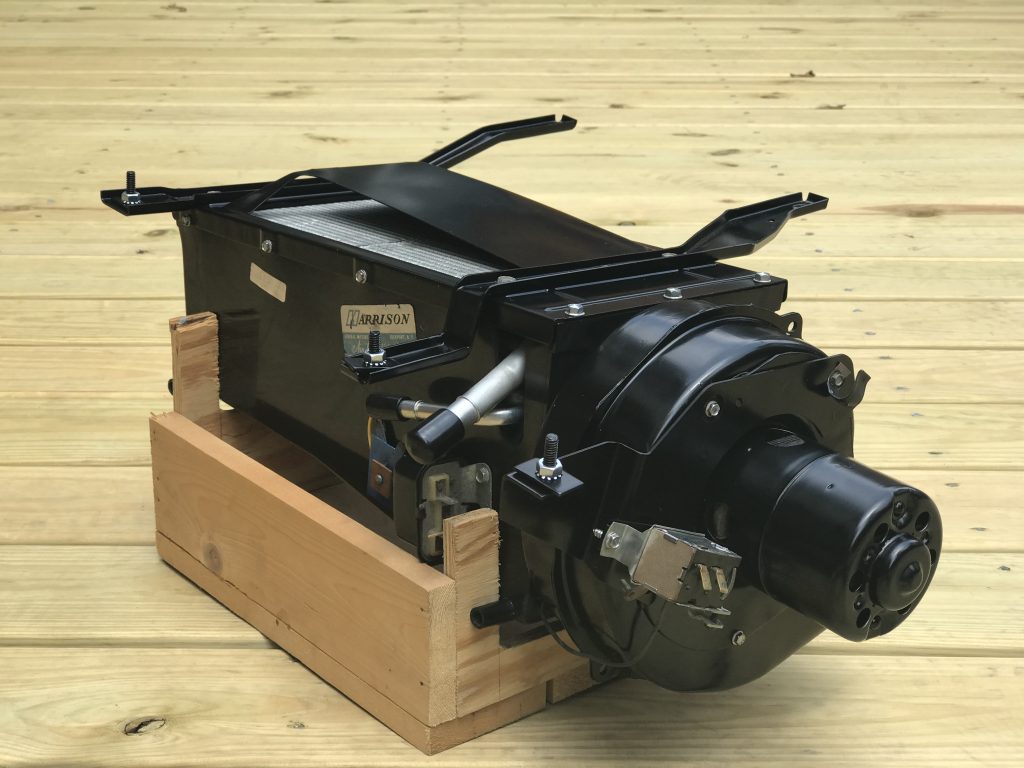
From 1961 through 1963, the control case had an internal swivel, to which was connected the temp control knob cable on one end, and the Ranco control cable on the other end. This had the effect of reversing the cable movement direction from the knob to the switch. Thus, when you pulled the knob out, the other end of the cable would be pushing the switch lever.
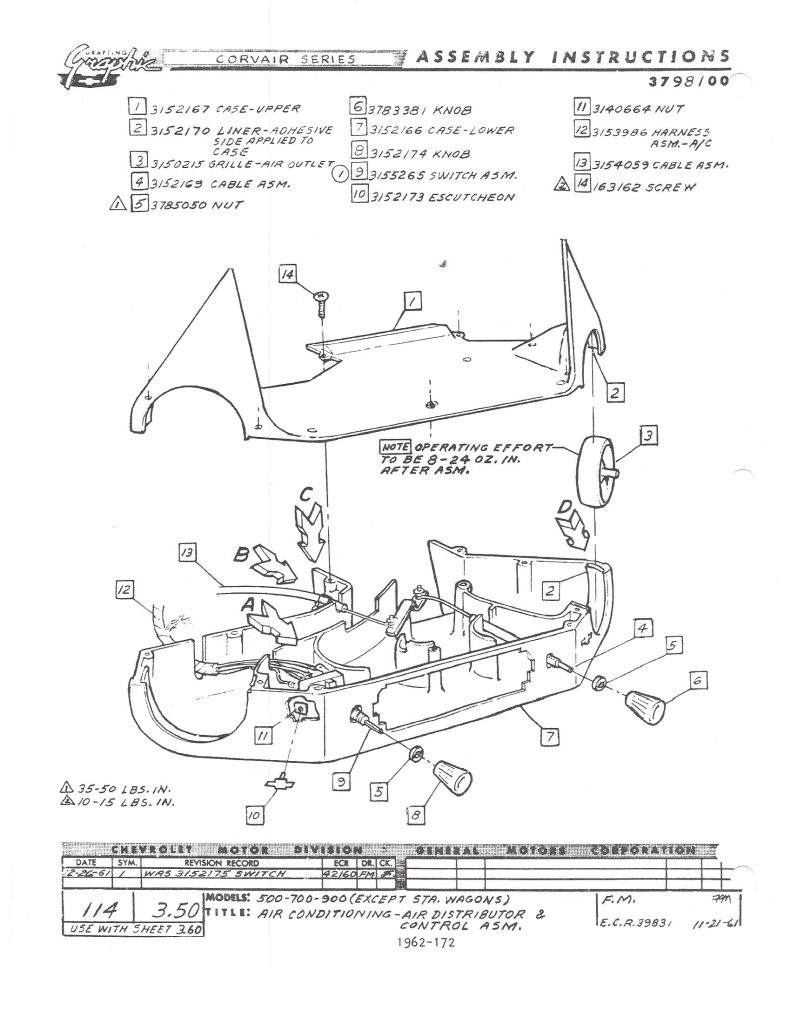
The design of the cable within the control case was changed in 1964,. The internal swivel was eliminated, so there was only a single cable. This therefore necessitated a change in the Ranco switch, as pulling the knob now pulls the switch lever.
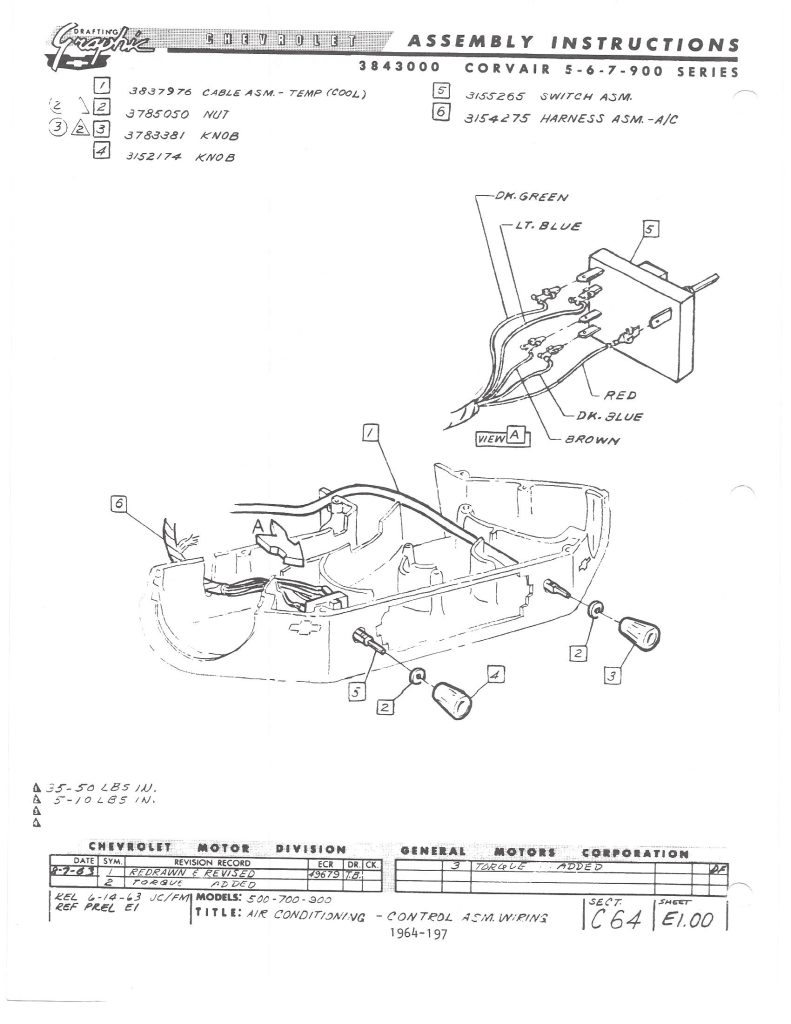
This page from a 1964 parts manual lists the two different switches and their part numbers:

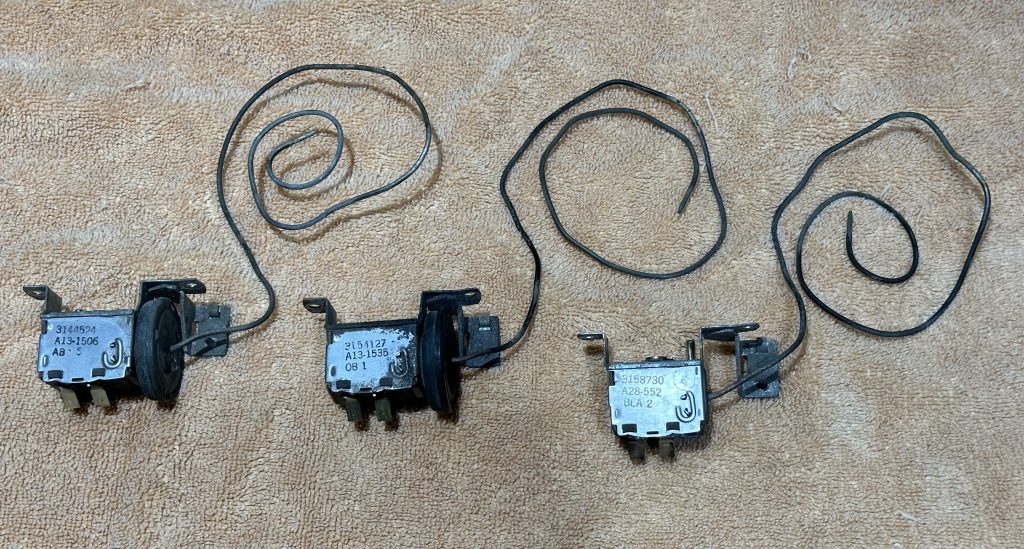
The switch part numbers are clearly marked on the side of the switches.
3144524 – first generation switch, used for 1961 and part of 1962, was superseded by:
3154127 – second generation switch, replaces 3144524 and used for all 1961-63
3158730 – Used for 1964 only
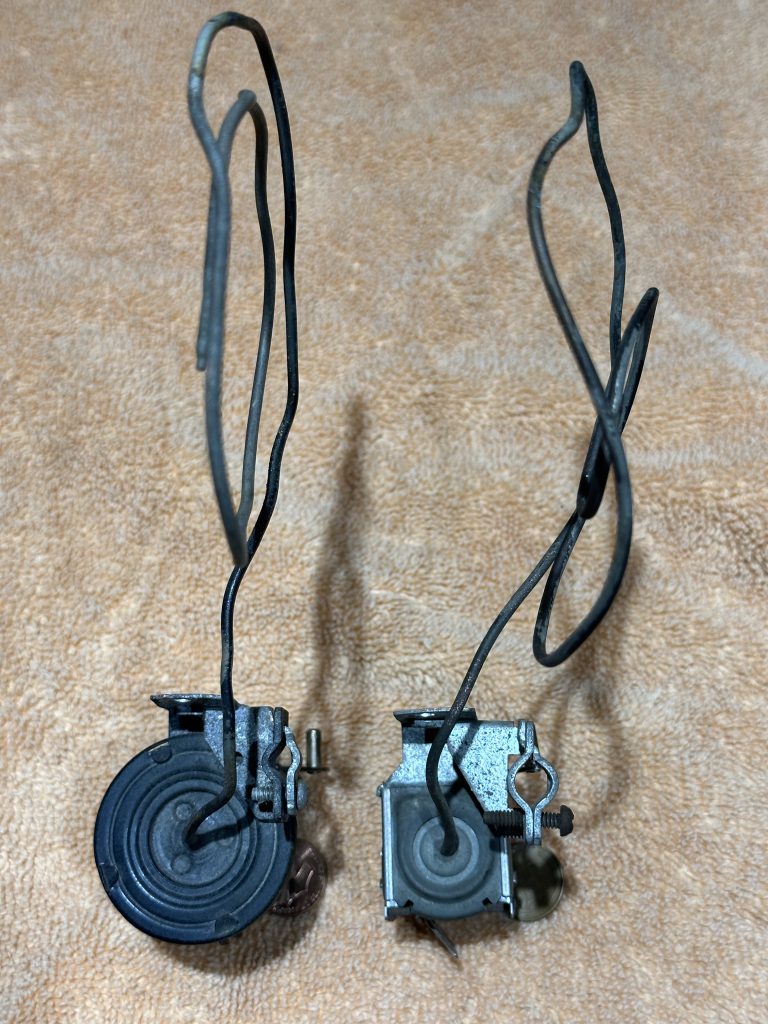

The next two photos are from the Assembly manuals, showing how to attach the cable to the Ranco switch.
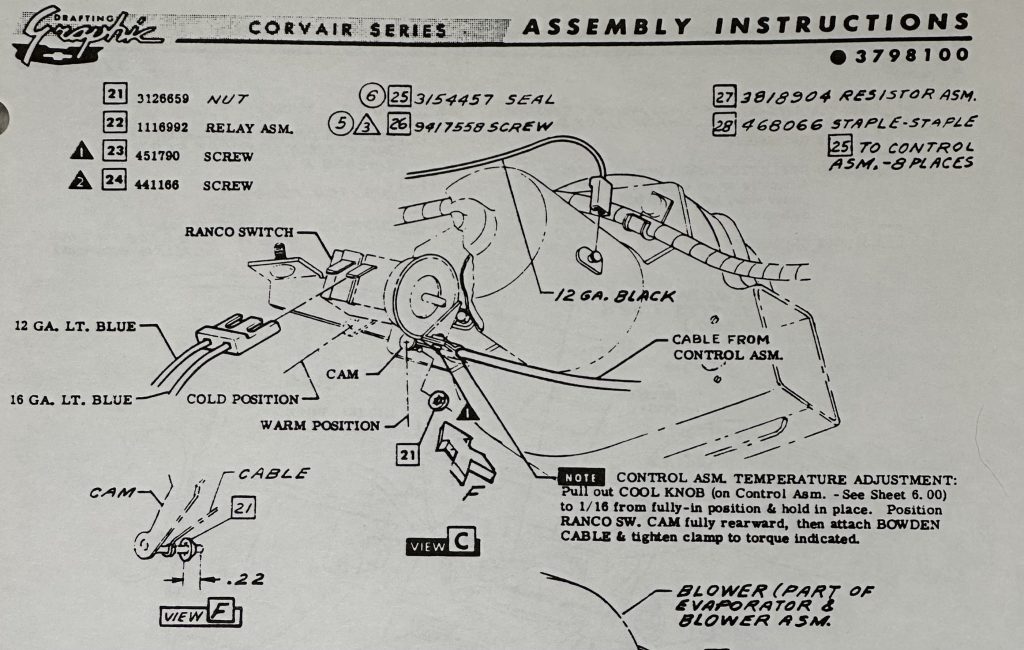
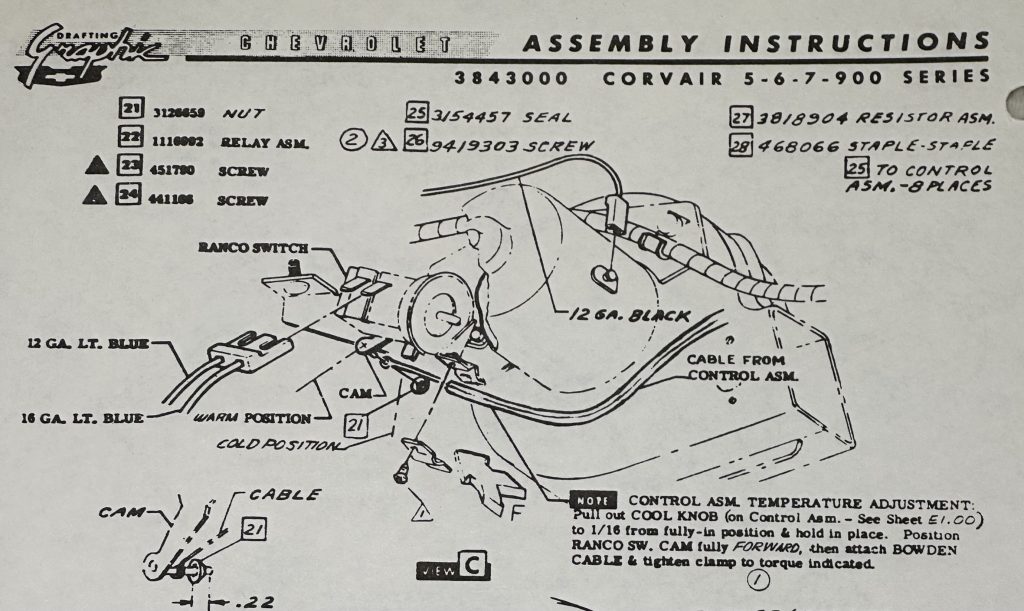
If you are buying and installing stock early model air conditioning evaporator/air control unit in your Corvair, you must be certain to match up the parts or they will not function correctly.
I’ll conclude this article with a video showing an easy way to test these Ranco switches:



